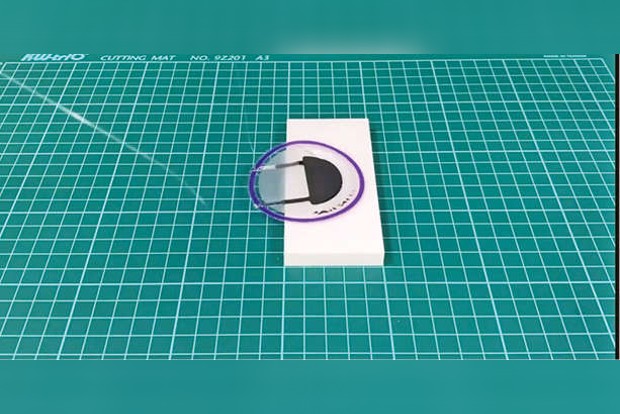Begin typing your search...
This robot looks like a pancake and jumps like a maggot
A group of scientists has designed a tortilla-shaped robot that can jump several times per second and higher than seven times its body height of half a centimeter. They report that the robot, which is the size of a squished tennis ball and weighs about the same as a paper clip, nimbly performs these feats without any semblance of feet.

New York
If a pancake could dream, it might long for legs so it could jump off your breakfast plate in pursuit of a better, unchewed life. But legs, it turns out, are not necessary for something as flat as a flapjack to hop around.
A group of scientists has designed a tortilla-shaped robot that can jump several times per second and higher than seven times its body height of half a centimeter. They report that the robot, which is the size of a squished tennis ball and weighs about the same as a paper clip, nimbly performs these feats without any semblance of feet.
Their research was published on Tuesday in the journal Nature Communications.
Shuguang Li, a roboticist at Harvard who was not involved with the research, called the new robot “a clever idea” and “an important contribution to the soft robotics field.” Many terrestrial robots, meaning ones at home on the ground rather than in air or water, move by rolling or walking.
But the ability to jump can help a terrestrial robot traverse new spaces and navigate rough terrain; sometimes it’s more efficient for a robot to jump over an obstacle than to go around it, Rui Chen, a researcher at Chongqing University in China and an author of the paper, wrote in an email.
Although jumping can offer some robots a competitive edge, engineering that ability has been a challenge for robotics researchers. Some soft robots that store energy can perform a single, impressive jump very infrequently. Some lightweight soft robots that do not store energy can hop about very frequently but cannot jump high or far enough to successfully cross an obstacle like a curb.
The ideal jumping robot would be able to frequently jump high and far. But “these two pursuits are contradictory,” Dr. Chen said. Jumping higher or farther requires more energy, and jumping more frequently requires that energy to be accumulated and released over a shorter period of time — a tall task for a tiny robot.
For inspiration, the researchers looked to gall midge larvae, maggots that miraculously hurl themselves across distances 30 times as long as their log-like bodies, which are one-tenth of an inch long. “Most creatures need feet to jump,” Dr. Chen said, adding that the larvae “can leap by the bending of their bodies.”
The maggot squishes itself into the shape of a ring — sticking its head to its rear with special sticky hairs — and squeezes fluid toward one end of its body, making it rigid. The accumulation of fluid builds up pressure, and releasing the pressure sends the maggot soaring.
The robot’s disklike body does not resemble that of a gall midge larva, but it jumps like one. Its body is made of two plastic pouches printed with electrodes; the front pouch is filled with liquid and the rear is filled with the same volume of air.
The robot uses static electricity to drive the flow of liquid to deform parts of its body, which causes the body to bend and generate force with the ground, resulting in a jump. And the air pouch mimics the function of an animal’s tail, helping the robot maintain a stable position while jumping and landing.
This design allows the robot to jump 7.68 times its body height and have a continuous jumping speed of six body lengths per second — a speed that Dr. Li called “very impressive.” The researchers propose integrating sensors into the tiny robot to allow it to detect environmental conditions, such as pollutants in buildings.
Visit news.dtnext.in to explore our interactive epaper!
Download the DT Next app for more exciting features!
Click here for iOS
Click here for Android
Next Story



